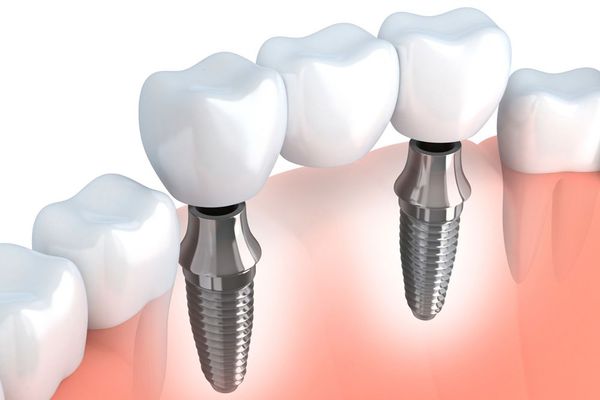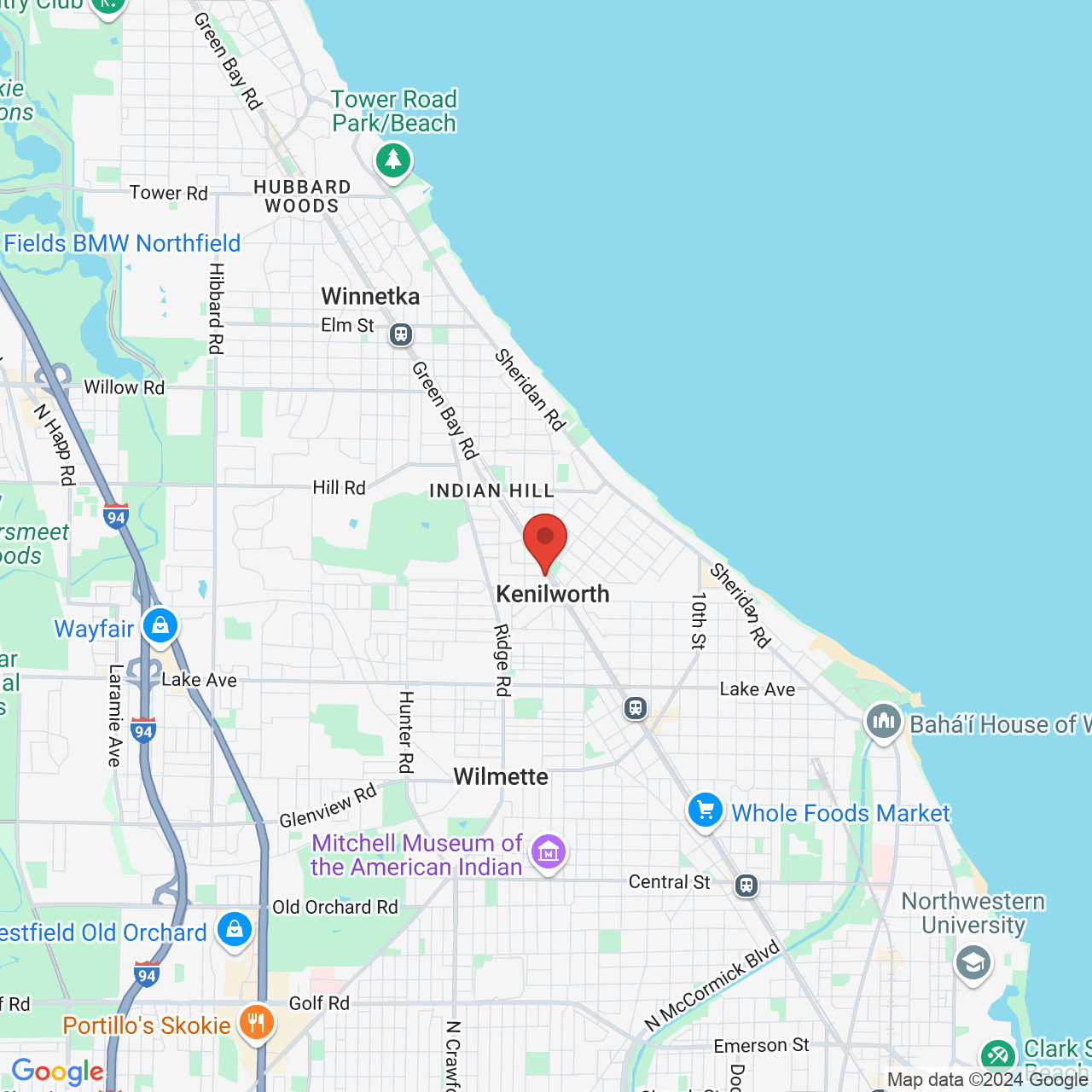Bridge the Gap to a Healthy Smile with Dental Bridges
 If you have one or more missing teeth, a dental bridge may be a very valuable and effective treatment for your smile. A dental bridge is a restoration that literally bridges the gap between missing teeth. Dr. Art Carpenter is a highly skilled and esteemed dentist who can design and place traditional dental bridges or implant-supported bridges at his Kenilworth, IL, dental office. During a consultation, Dr. Carpenter can determine which option is best for you based on your goals and the state of your oral health.
If you have one or more missing teeth, a dental bridge may be a very valuable and effective treatment for your smile. A dental bridge is a restoration that literally bridges the gap between missing teeth. Dr. Art Carpenter is a highly skilled and esteemed dentist who can design and place traditional dental bridges or implant-supported bridges at his Kenilworth, IL, dental office. During a consultation, Dr. Carpenter can determine which option is best for you based on your goals and the state of your oral health.
What is a Dental Bridge?
A traditional dental bridge consists of at least two dental crowns that provide a foundation for a pontic⏤or prosthetic tooth⏤that rests in the space created by a missing tooth. The two teeth on either side of the gap are called abutment teeth, and are reshaped in order to be capped with crowns that ultimately provide support for the pontic. Dental bridges can also be supported by dental implants, which are small posts surgically inserted into the jaw to replace tooth roots. While both traditional and implant-supported bridges are highly beneficial for patients with missing teeth, there is no other dental restoration that offers more benefits than dental implants.
Procedure for Placing a Dental Bridge
Once Dr. Carpenter has determined your candidacy for a dental bridge, he will begin the process by taking detailed impressions of your smile. During your consultation, Dr. Carpenter will ask you to bite down on special dental putty. This will allow our high-tech dental lab to create a bridge that blends seamlessly with your smile. Our dental lab uses only metal-free zirconia or IPS e.max® dental bridge materials that look as natural as real teeth while providing excellent durability. These materials will allow you to eat, speak, and smile with confidence knowing that your dental bridge will not shift or break.
Dental bridges can also be supported by dental implants, which are small posts surgically inserted into the jaw to replace tooth roots.
If you choose an implant-supported bridge, you must first undergo one to two surgeries in which the implants are inserted in the jaw. This can extend the total treatment timeline by three to six months. If you are missing only one tooth, you will only need a single implant and an implant-supported crown.
Benefits of a Dental Bridge
Living with missing teeth can make everyday tasks such as eating or speaking much more difficult. Dental bridges can improve your confidence by increasing your urge to smile more often, attend social gatherings, and simply feel more comfortable in your own skin.
Your oral health can be dramatically improved by receiving a dental bridge, especially one that is supported by a dental implant. A dental implant replaces tooth roots and fuses with your jawbone for unparalleled support. Implants are the only restorative treatment that can prevent jaw atrophy following tooth loss. This not only supports oral health, but also helps to maintain your facial features.
Missing teeth can also have a negative impact on the alignment of your jaw, leading to headaches and other unwanted symptoms. Fortunately, a dental bridge can more evenly distribute the force of your bite, relieving tension on the temporomandibular joints (TMJs).
Implant-Supported Bridges: Lifelong Restorations for a Fuller and Stronger Smile
Implant-supported bridges are a secure, durable, natural-looking replacement for two or more missing teeth in a row. Dr. Carpenter continually pursues ongoing education to provide our Kenilworth, IL, patients with the long-lasting benefits dental implants offer. Dental implants have become the gold standard in tooth replacement, and Dr. Carpenter’s advanced training ensures the greatest precision and accuracy in their placement and restoration.

Implant-Supported and Traditional Bridges
Both implant-supported bridges and traditional bridges consist of multiple crowns fused together. However, a traditional bridge will attach to your natural, healthy teeth that sit on either side of the gap in your smile. With traditional restorative treatment, patients who were missing a single tooth would require a bridge that sacrificed two healthy teeth for support. Now, dental implants allow patients to replace a single tooth with only one implant post and a customized crown. For patients missing more teeth, an implant-supported bridge will typically rely on two state-of-the-art implant posts for stability. As a result, your healthy teeth will require no alteration, helping them to remain strong and whole long into the future.
Additionally, dental implants provide bone stimulation, which prevents jaw deterioration. Bone loss is a natural consequence of tooth loss. Traditional bridges replace only the missing portions of the tooth above the gum line—not the roots—so bone deterioration continues. An implant-supported bridge replaces the full structure of a tooth, halting bone loss and improving dental function.
Candidates for Implant-Supported Bridges
Patients missing two or more teeth in a row are generally good candidates for an implant-supported dental bridge. To qualify for treatment, you must have adequate bone tissue to support dental implants. If bone loss has already taken place, you may require a bone graft to improve jawbone density or a sinus lift to increase your eligibility for treatment.
In addition to good jawbone health, you must also have healthy teeth and gums, free from disease and decay. While implant posts can last a lifetime, that is only possible with proper care. You should also be a non-smoker, as smoking can cause implant failure. Lastly, it is important to commit to diligent at-home care and regular dental cleanings and exams with our doctors.
Dr. Carpenter can help you plan a customized treatment to achieve your oral health goals and improve your quality of life.
Treatment Process
Dr. Carpenter will first meet with you to discuss your unique case. Together you can determine the number of implants you will need and design your surgery for precise treatment. The number of implants placed will depend on the number of missing teeth, but most patients need at least two posts. You will then undergo a minor procedure to receive your implant. Once the posts are in place and you begin healing, osseointegration can occur. This process can take between three and six months, during which the implants will permanently fuse with your jawbone.
When the osseointegration phase is complete, Dr. Carpenter can attach abutments or connector pieces to the implants. After a brief two-week recovery, our team can take impressions and fabricate your custom restoration from lifelike materials. When the bridge is ready, Dr. Carpenter will affix it to the implants, giving you a full and aesthetic smile.
Achieve a Healthy, Strong Smile
If you want a fuller smile with restorations that can last a lifetime, contact our office online or call (847) 251-5004 to learn more about our implant-supported restorations. Dr. Carpenter can help you plan a customized treatment to achieve your oral health goals and improve your quality of life.






